Results 291 to 300 of 12091
Thread: Anandtech News
-
01-27-11, 09:30 AM #291
Anandtech: Tablet Hands-On Roundup
2011 is the Year of the Tablet. With all due respect to the rabbit, who would have otherwise been assigned to this year, I think the tablet has earned the right of representing 2011. If you followed CES at all this year, you’d know why.
I decided pretty early on that I would make a huge post with all the tablets we looked at instead of posting each one individually, simply because the sheer number of tablets on the show floor meant that I would have taken over AnandTech’s front page with tablet-related posts. It would have been impossible to cover all the new tablets, but I think we managed to get our hands on most of the high profile tablets in addition to some of the more promising new tablets out there.
More...
-
01-27-11, 02:10 PM #292
Anandtech: This Just In: LG Optimus 2X, Our First Tegra 2 Smartphone
It's been 22 days since we saw the Tegra 2 packing LG Optimus 2X at CES, and just moments ago the device arrived at our doorsteps ready for a thorough reviewing. It's out of the box and charging now, ready to enter our battery life tests, but before that we managed to grab a bunch of photos and a few quick benchmarks.
Read on for our super brief preview, and stay tuned for the full review.
More...
-
01-27-11, 05:10 PM #293
Anandtech: The Brazos Review: AMD's E-350 Supplants ION for mini-ITX
AMD has been curiously absent from the value netbook and nettop segments since Atom’s arrival nearly three years ago. These markets are highly profitable only for component vendors, as the OEMs that sell netbooks and nettops must survive on very slim margins in order to hit aggressive price points. It wasn’t too long ago that we were shocked by $699 desktop PCs, but to now be able to get a fully functioning portable PC with display at below $300 is impressive. In order for the profit equation to work out however, you can’t simply scale down a larger chip - you need an architecture targeted specifically at the type of very light workloads you expect to encounter in these segments. Underclocking and undervolting an architecture targeted at high end desktops or servers won’t cut it.
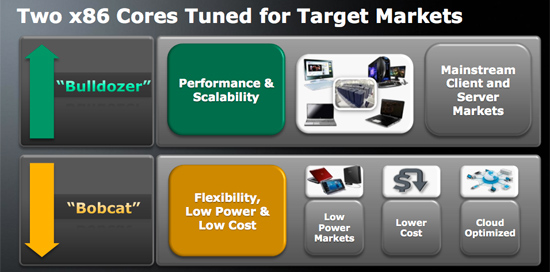
Generally a single microprocessor architecture can cover an order of magnitude of power envelopes. You can take an architecture from 10W - 100W using clock speed, voltage scaling and disabling features (e.g. cutting cache sizes). You can’t efficiently take a 100W architecture and scale it down to 1W. Intel realized this with Atom, and what resulted was a new architecture designed to span the 0.5W - 5W range. Given the constraints of the process (Atom was built at 45nm) and a desire to keep die size down to a minimum (and thus maximize profits), Intel went with a dual-issue in-order architecture reminiscent of the old Pentium - but with a modern twist.
AMD came to the same realization. For it to compete in these value markets, AMD couldn’t rely on its existing Phenom II derived architectures. The Phenom II and its relatives currently span a range of TDPs from 9W to 140W, and at the lower end of that spectrum we’re talking about some very low clock speeds and performance targets. Getting down to 1W was out of the question without a separate design.
What AMD came up with was a core called Bobcat, initially targeted for netbooks, notebooks, nettops and entry level desktops. Architecturally Bobcat is a significant step ahead of Atom: while still dual-issue, it features an out-of-order execution engine making it the Pentium Pro to Atom’s Pentium.
It isn’t just CPU architecture that AMD surpassed Atom with, the first incarnation of Bobcat is an integrated SoC with on-die DirectX 11 GPU. AMD calls this combination a Fusion APU (Accelerated Processing Unit) as it places both a CPU and GPU on a single die. Read on for our full review of AMD's first Fusion part: the E-350.
More...
-
01-31-11, 11:50 AM #294
Anandtech: Intel Discovers Bug in 6-Series Chipset: Our Analysis
In our Sandy Bridge review I pointed out that Intel was unfortunately very conservative in one area of the platform: its chipset. Although the 6-series chipset finally brought native 6Gbps SATA to Intel platforms it failed to fix issues with 23.976 fps video playback. Intel also failed to deliver a chipset that can support SNB's processor graphics as well as overclocking. Today, things just got even more disappointing.
Intel just announced that it has identified a bug in the 6-series chipset, specifically in its SATA controller. Intel states that "In some cases, the Serial-ATA (SATA) ports within the chipsets may degrade over time, potentially impacting the performance or functionality of SATA-linked devices such as hard disk drives and DVD-drives.". I don't know the specifics of the bug yet, but Intel very rarely issues statements like this so it's likely quite serious.
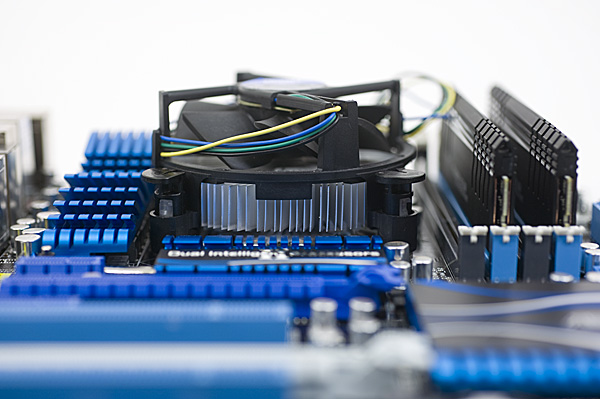
The fix requires new hardware, which means you will have to exchange your motherboard for a new one. Intel hasn't posted any instructions on how the recall will be handled other than to contact Intel via its support page or contact the manufacturer of your hardware directly. In speaking with motherboard manufacturers it seems they are as surprised by this as I am.
Intel will begin shipping the fixed version of the chipset in late February. The recall will reduce Intel's revenue by around $300 million and cost around $700 million to completely repair and replace affected systems.
Read on for more information on the nature of the bug and what it means for current and future SNB owners.
More...
-
01-31-11, 05:10 PM #295
Anandtech: The Source of Intel's Cougar Point SATA Bug
I just got off the phone with Intel’s Steve Smith (VP and Director of Intel Client PC Operations and Enabling) and got some more detail on this morning’s 6-series chipset/SATA bug.
The Problem
Cougar Point (Intel’s 6-series chipsets: H67/P67) has two sets of SATA ports: four that support 3Gbps operation, and two that support 6Gbps operation. Each set of ports requires its own PLL source.
The problem in the chipset was traced back to a transistor in the 3Gbps PLL clocking tree. The aforementioned transistor has a very thin gate oxide, which allows you to turn it on with a very low voltage. Unfortunately in this case Intel biased the transistor with too high of a voltage, resulting in higher than expected leakage current. Depending on the physical characteristics of the transistor the leakage current here can increase over time which can ultimately result in this failure on the 3Gbps ports. The fact that the 3Gbps and 6Gbps circuits have their own independent clocking trees is what ensures that this problem is limited to only ports 2 - 5 off the controller.
You can coax the problem out earlier by testing the PCH at increased voltage and temperature levels. By increasing one or both of these values you can simulate load over time and that’s how the problem was initially discovered. Intel believes that any current issues users have with SATA performance/compatibility/reliability are likely unrelated to the hardware bug.
One fix for this type of a problem would be to scale down the voltage applied across the problematic transistor. In this case there’s a much simpler option. The source of the problem is actually not even a key part of the 6-series chipset design, it’s remnant of an earlier design that’s no longer needed. In our Sandy Bridge review I pointed out the fair amount of design reuse that was done in creating the 6-series chipset. The solution Intel has devised is to simply remove voltage to the transistor. The chip is functionally no different, but by permanently disabling the transistor the problem will never arise.
To make matters worse, the problem was inserted at the B-stepping of the 6-series chipsets. Earlier steppings (such as what we previewed last summer) didn’t have the problem. Unfortunately for Intel, only B-stepping chipsets shipped to customers. Since the fix involves cutting off voltage to a transistor it will be fixed with a new spin of metal and you’ll get a new associated stepping (presumably C-stepping?).
While Steve wouldn’t go into greater detail he kept mentioning that this bug was completely an oversight. It sounds to me like an engineer did something without thinking and this was the result. This is a bit different from my initial take on the problem. Intel originally characterized the issue as purely statistical, but the source sounds a lot more like a design problem rather than completely random chance.
It’s Notta Recall
Intel has shipped around 8 million 6-series chipsets since the launch at CES. It also committed to setting aside $700 million to deal with the repair and replacement of any affected chipsets. That works out to be $87.50 per chipset if there are 8 million affected chipsets in the market, nearly the cost of an entire motherboard. Now the funds have to cover supplying the new chipset, bringing in the affected motherboard and repairing it or sending out a new one. Intel can eat the cost of the chipset, leaving the $87.50 for shipping, labor and time, as well as any other consideration Intel provides the OEM with (here’s $5, don’t hate us too much). At the end of the day it seems like enough money to handle the problem. However Intel was very careful to point out that this is not a full blown recall. The why is simple.
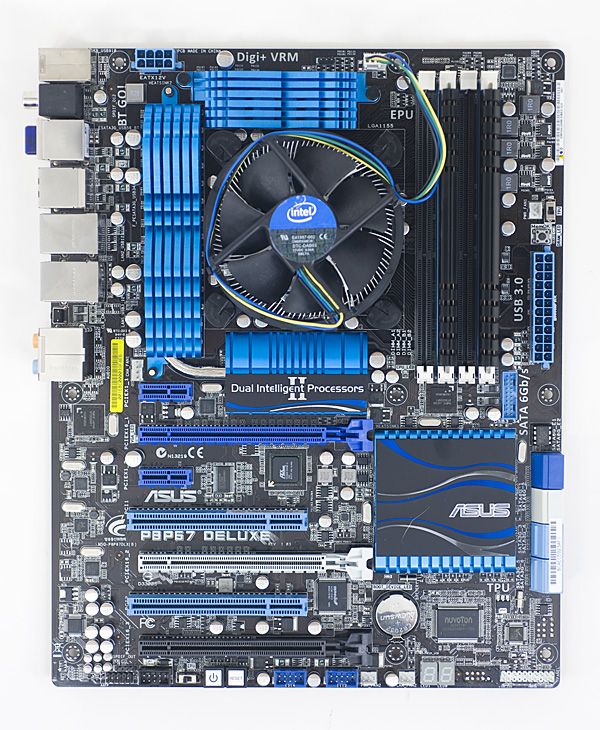
If you have a desktop system with six SATA ports driven off of P67/H67 chipset, there’s a chance (at least 5%) that during normal use some of the 3Gbps ports will stop working over the course of 3 years. The longer you use the ports, the higher that percentage will be. If you fall into this category, chances are your motherboard manufacturer will setup some sort of an exchange where you get a fixed board. The motherboard manufacturer could simply desolder your 6-series chipset and replace it with a newer stepping if it wanted to be frugal.
If you have a notebook system with only two SATA ports however, the scenario is a little less clear. Notebooks don’t have tons of storage bays and thus they don’t always use all of the ports a chipset offers. If a notebook design only uses ports 0 & 1 off the chipset (the unaffected ports), then the end user would never encounter an issue and the notebook may not even be recalled. In fact, if there are notebook designs currently in the pipeline that only use ports 0 & 1 they may not be delayed by today’s announcement. This is the only source of hope if you’re hoping for an unaffected release schedule for your dual-core SNB notebook.
Final Words
Intel maintains that Sandy Bridge CPUs are not affected, and current users are highly unlikely to encounter the issue even under heavy loads. So far Intel has only been able to document the issue after running extended testing at high temperatures (in a thermal chamber) and voltages. My recommendation is to try to only use ports 0 & 1 (the 6Gbps ports) on your 6-series motherboard until you get a replacement in place.
OEMs and motherboard manufacturers are going to be talking to Intel over the next week to figure out the next steps. Intel plans to deliver fixed silicon to its partners at the end of February, however it’ll still take time for the motherboard makers to turn those chips into products. I wouldn’t expect replacements until March at the earliest.
I maintain that the best gesture of goodwill on Intel’s part would be to enable motherboard manufacturers to replace P67/H67 motherboards with Z68 boards for those users who want them.
More...
-
02-01-11, 02:20 PM #296
Anandtech: AT Bench Update: Now with Mobile, Smartphone, and GPU 2011 Results!
Since starting our Bench results databases, they've grown by leaps and bounds. Bench is a central place where you can compare products based on the variety of tests and benchmarks we throw at them, and if you haven't checked it out already, you should, because it's downright huge. Our CPU bench alone has exploded, with test results for 121 different processors across 47 different disciplines. Today, Bench virtually doubles in size as we've added three new Benches.
First, and nearest and dearest to my heart, we introduce the Mobile Bench, a database of test results from over fifty different notebooks and netbooks across more than twenty different disciplines. Nearly every notebook we've tested since the beginning of 2010—and even a few towards the end of 2009—is represented here, although not all results are available on every notebook (i.e. high-detail gaming on a netbook isn't a concern). If you want to find the fastest gaming notebook or the best battery life on the market, check out our Mobile Bench.
Second and no less impressive is our Smartphone Bench. Featuring 27 different smartphones, our Bench contains results across 16 different tests, all easily searchable and sortable. If you're looking for the most talking time, the nicest screen, or the snappiest web browsing, the phone you're looking for is probably in our Smartphone Bench.
And finally, Ryan has been working overtime to produce our 2011 GPU Bench. It features the results of 29 different GPU configurations across 48 different tests, updated with DirectX 11 class hardware and the benchmarks to go with it along with some DirectX 10 hardware to use as a frame of reference.
Our Benches are updated regularly as new products get reviewed and entered into them (hence the staggering mass of our CPU Bench), and you find them all through the main AnandTech Bench page. As we review future phones, laptops, GPUs, and CPUs, the database will continue to grow. If you have any questions about or suggestions for the new Benches, please let us know in the comments!
More...
-
02-01-11, 10:20 PM #297
Anandtech: Gigabyte Announces 6-series Motherboard Replacement Program
Yesterday Intel announced the largest product replacement / recall / pleasesendthembackpressrelease I can remember it ever making (excluding FDIV). The product in question? All 6-series chipsets, a necessary part of any Sandy Bridge (aka 2nd generation Intel Core microprocessor, aka Intel Core i7/i5/i3 2xxx) system. The problem? A transistor with a thin gate oxide being driven by too high of a voltage. The aforementioned transistor is present in the clock tree circuitry of the 3Gbps SATA ports that branch off of all 6-series chipsets. The 6Gbps ports are unaffected. Over a period of 3 years, at least 5% of all these chipsets will have some failure on the 3Gbps SATA ports. The failure could start in the form of errors on the SATA link and ultimately result in an unusable SATA port. No damage to attached hardware should result.
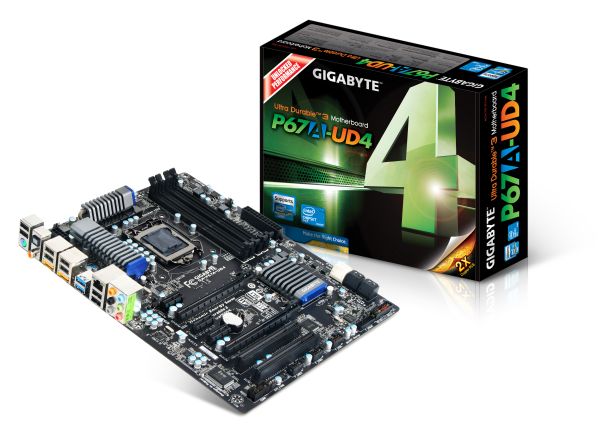
Because of the nature of the problem Intel has set aside $700M to deal with the replacement (ahem, not recall) of up to 8 million impacted 6-series chipsets. After stopping shipments and production of the 6-series chipsets, Intel began talking to its partners about how to proceed yesterday.
The fix for the problematic transistor requires a hardware change. The 6-series chipset design doesn’t have to be redone, but there’s a metal layer change that must be made. The result is a new stepping of the 6-series chipsets. Intel shipped with stepping B2, and the fixed version will carry a B3 stepping.
Just half an hour ago, Gigabyte sent its replacement strategy for all of its own motherboards.
The key messages are as follows:
1) Gigabyte has stopped shipment to and recalled any unsold 6-series B2 motherboards from distributors and dealers.April is two months away, that’s later than the end of February. I’m guessing the first recipients of B3 stepping chipsets will be large OEMs and notebook manufacturers. The component guys will likely come second. Getting replacement motherboards won’t happen on April 1st if that’s when Gigabyte gets chipsets either. This could end up being an April/May thing instead of March/April.
2) Any Gigabyte 6-series B2 motherboards that have already been sold will be accepted back for replacement with a B3 board, regardless of condition. I asked Gigabyte if this meant that non-working boards could also be returned, Gigabyte said yes - all eligible 6-series models with B2 stepping chipsets will be accepted back.
Elligible Gigabyte 6-series Motherboards GA-P67A-UD3 GA-P67A-UD3P GA-P67A-UD4 GA-P67A-UD5 GA-P67A-UD7 GA-H67MA-D2H GA-H67MA-UD2H GA-H67A-UD3H GA-H67M-D2 GA-H67M-UD2H 3) Gigabyte says that it should have 6-series B3 chipsets in April.
4) The replacement program will happen at the dealer/distributor level. You will have to exchange your board at the location you purchased it from.
5) Customers can either exchange their board (you'll have to wait until April for this to happen) or you can get a full refund sooner (immediately?). Gigabyte recommends going the refund route as that gives you more flexibility for what you want to do next.
6) The replacement board you get will be a brand new motherboard based on the B3 chipset. Gigabyte isn’t ready to disclose if there will be any new design features to these boards as well.
7) The cost of the product exchange will be handled by Intel and Gigabyte (presumably Intel is footing the entire bill).
Sending all returns/exchanges through the distributor/retailer channels is an interesting approach. I would rather Gigabyte handle the whole thing (e.g. send us an eligible board, we’ll send you a new one) but I can understand if getting the distributors/retailers to help makes things easier.
The refund option is a nice one, although I'm not sure whether etailers will let you return your CPU as well once it has been used. I suspect that's something you'll have to take up with the vendor itself. If you plan on sticking with a Sandy Bridge system, your best bet is probably to keep using your system as is today and just exchange when the time comes.
I'm glad Gigabyte will be providing brand new motherboards for users who opt to exchange and that Gigabyte is accepting boards regardless of condition. Gigabyte hasn't yet decided what it's going to do with all of the returned boards.
Until April rolls around, the best you can do is use the 6Gbps SATA ports on your Sandy Bridge board. We’ll keep you posted as we get more of these notices from manufacturers.
More...
-
02-02-11, 12:10 PM #298
Anandtech: Google's Android Event, with Honeycomb and more!
We're at Google's Android event here at Mountain View. Sumptuous breakfast aside, we expect Google to talk in-depth about their Honeycomb release, other updates to the Android ecosystem and some hands-on time with tablets running Honeycomb and possibly other devices.
Breakfast and Android...
Stay tuned for a more detailed analysis of the event later today.
More...
-
02-02-11, 03:20 PM #299
Anandtech: G.hn Silicon Emerges from Vaporware Territory
Powerline networking products are quite popular in the European and Asian markets compared to the US. The Western Digital Livewire product was the first powerline product reviewed by AnandTech. In that piece, I had covered the various powerline networking standards currently in existence. The initiatives of the HomePlug consortium resulted in the IEEE P1901 standard and HomeGrid's efforts have led to the ITU G.hn specifications.
In the WD Livewire coverage, I had noted the lack of working silicon from any of the G.hn supporters as the prime reason for its struggles. Did things change at CES 2011? Read on to find out what I gathered from my meetings with Atheros and Sigma Designs.
More...
-
02-02-11, 08:30 PM #300
Anandtech: Google's Android Event Analysis
Today's Android event had just one real announcement; the Android Marketplace webstore (which is Live at market.android.com). The rest of it was just a Honeycomb/Motorola Xoom show-and-tell, with various Google-partners coming on stage and showing their apps running on the Honeycomb platform. As such, this article covers the details of the Android Marketplace webstore and other updates first, followed by impressions gathered during the Honeycomb/Xoom hands-on.
More...
Thread Information
Users Browsing this Thread
There are currently 9 users browsing this thread. (0 members and 9 guests)




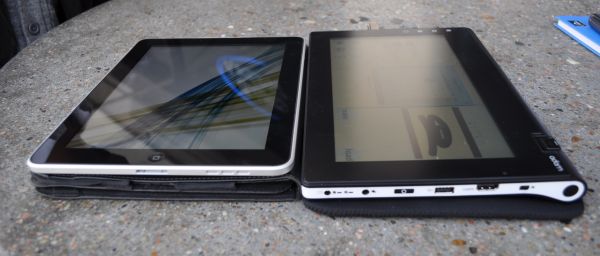

 Quote
Quote
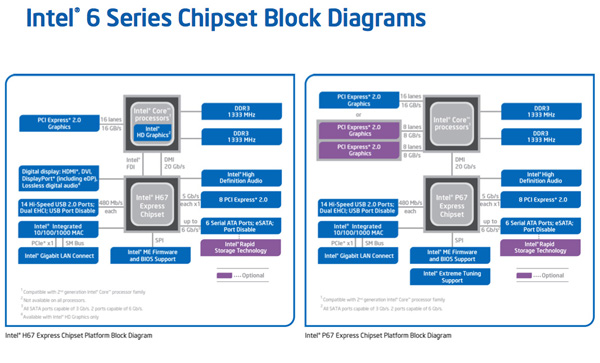




















Bookmarks